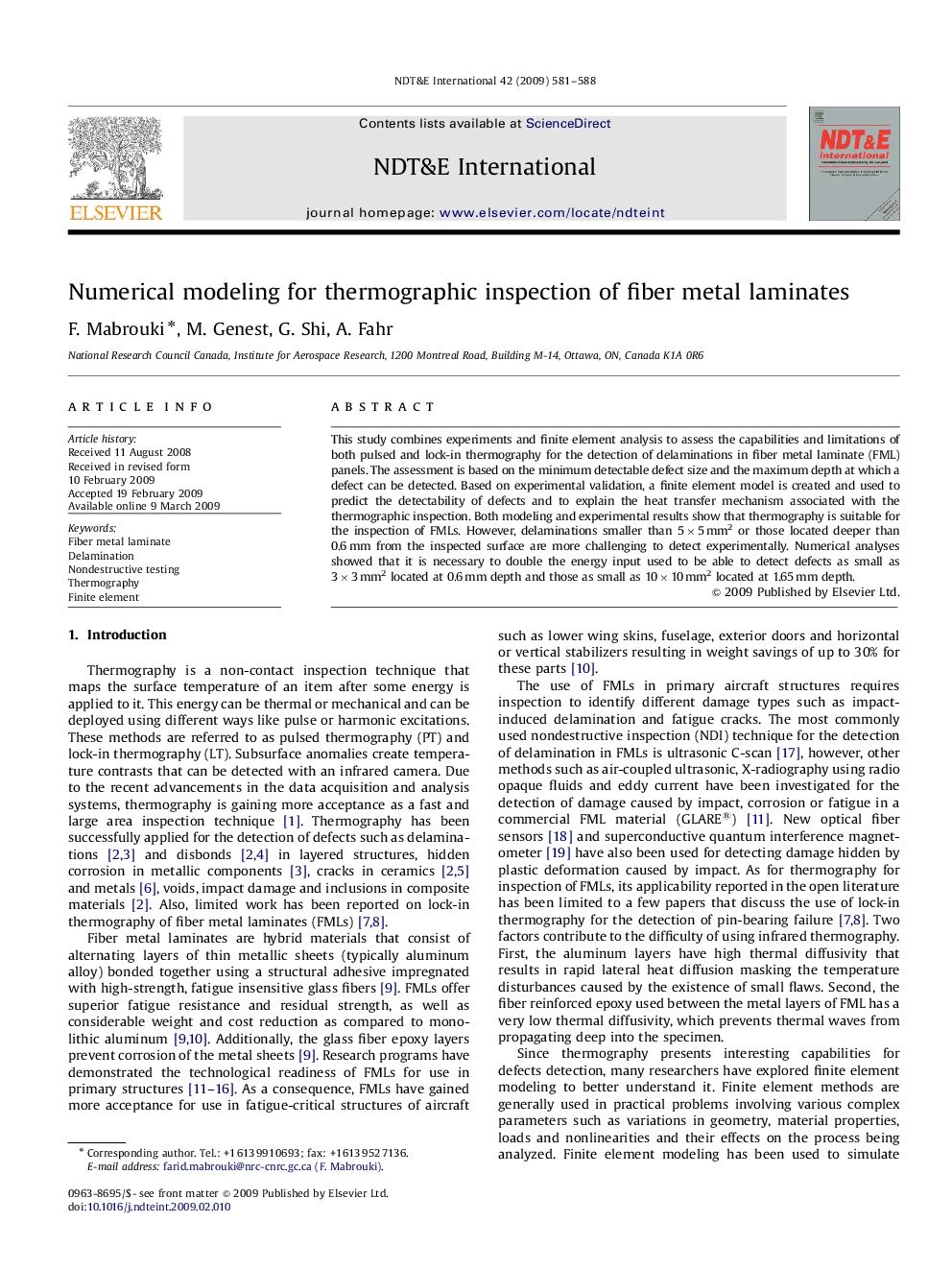| Article ID | Journal | Published Year | Pages | File Type |
|---|---|---|---|---|
| 295736 | NDT & E International | 2009 | 8 Pages |
This study combines experiments and finite element analysis to assess the capabilities and limitations of both pulsed and lock-in thermography for the detection of delaminations in fiber metal laminate (FML) panels. The assessment is based on the minimum detectable defect size and the maximum depth at which a defect can be detected. Based on experimental validation, a finite element model is created and used to predict the detectability of defects and to explain the heat transfer mechanism associated with the thermographic inspection. Both modeling and experimental results show that thermography is suitable for the inspection of FMLs. However, delaminations smaller than 5×5 mm2 or those located deeper than 0.6 mm from the inspected surface are more challenging to detect experimentally. Numerical analyses showed that it is necessary to double the energy input used to be able to detect defects as small as 3×3 mm2 located at 0.6 mm depth and those as small as 10×10 mm2 located at 1.65 mm depth.
